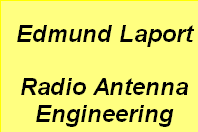

Antentop is FREE e-magazine devoted to Antennas and Amateur Radio an
Special page devoted to
The Helical Whip for RV and Mobile Use

Custom Search
|
ANTENTOP-
01- 2020, # 024
|
The
Helical Whip for RV and Mobile Use |
|
|
|
|
followed by a close- spaced loading coil several inches
long, and topped by a metal tuning tip with a set screw and 2
or 3 inches of 1/8- inch steel rod. I replaced this rod with one
the same diameter about 24 inches long, and cut and adjusted it
unit it resonated at the proper point of the 20- meter band. It is important not to extend this rod into loading
coil, as it will likely heat up if much power is applied. Your local hardware store is a good source of brass brazing
rod. While I did not try this antenna on other bands, it should
work on 12, 15, or 17 meters if you use different lengths of pre-adjusted
rod. For 10 meters, it will probably be necessary to remove a
few turns from the loading coil. Neighborhood garage sales and flea markets are good,
inexpensive sources for CB antennas. Because most late model,
top loaded CB antennas do not have tuning tip, you may need to
improve one (details on how to do this later). Building Fiber
Glass Rod Helicals The light weight of fiber glass fishing rods makes
them useful in helical antenna construction. Weight can be important
when four or five antennas are placed on one spring mount. Choosing a Fiber
Glass Rod You can find fiber glass rod at garage sales and
flea markets. Poles with broken or missed guides and |
Figure 2 Remove the entire handle, unless it appears that
an inch or |
|
handles can often be bought for almost nothing. Look for
hollow rods at least 4 or 5 feet long with a 3/8 to ½-
inch diameter near the handle. You can use smaller, solid rods,
but they require heavier, larger loading coils. Use one- piece
rods with no metal ferrules or joints. It is possible to use larger
rods with metal ferrules if you cut them out and rejoin the rod
pieces with epoxy. One way to do this is to slide one end into the
other, or use a tight- fitting piece from a solid rod as an internal
splint. Refer to Figure
3 for construction details. Base Remove all windings, wire, and thread, along with
the tip, guides, and any foil of metal bands. |
two would make a good base mount. There are so many
different types of handle attachments that it is difficult to
prescribe a standard of construction. Keep in mind the cross-
section drawing of Figure 3.
You need to mount a 3/8- inch diameter steel or brass bolt with
no. 24 thread 1-1/2 to 2 inches long in the base after cutting
off the head of the bolt. Use two-part epoxy to hold this bolt
in place. The 5 minute kind will save construction time. How drill and tap through the bolt and handle to
provide an electrical connection. Brass bolt (8- 32) are ideal.
Use a solder lug to attach the antenna wire, soldering to both
the lug and the screw head. You should cover the complete base
with shrink or several coats of good enamel, or both. Stem Cut a length of wire, preferably
no. 18 copper enameled (no. 20 or 16 will do), for frequency desired. |
|
Page- 46 |
 |
 |
|
 |
|
|
|||
Just for Fun:

Powered byIP2Location.com
Thanks for your time!
Last Updated:
January 30, 2021 19:01






